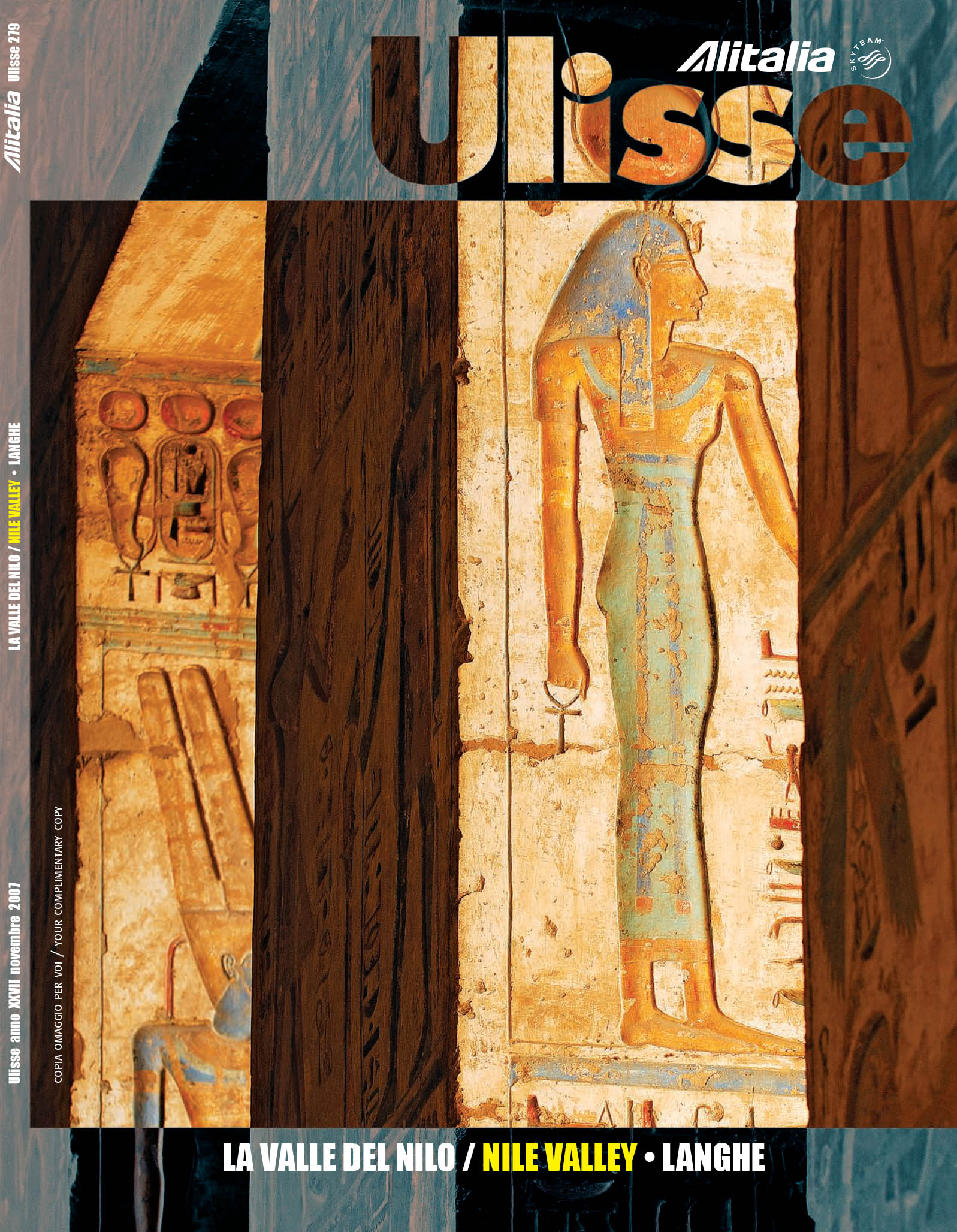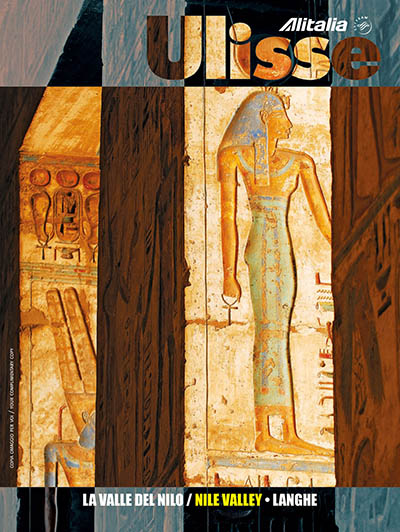
Article
Antonino Cardillo
Cesare Brandi says “Egypt is not a country, it’s a river”.[1] And the river is a road, which like a great motorway connects different geographic points. Thus its waters are not a separator but a means of exchange and communication.
There are several ways of travelling in Egypt: one can find sanctuary in the “ancient” Egypt constructed from the images and romanticised stories of western documentaries, filling the darkest passages of history and transfiguring them into what we would like them to have been. An abstract country, a seductive, idealised icon for consumption, reaching its commercial culmination with the Cruise on the Nile. A rite celebrated by European writers over and over again, originating from the fascination with Egyptian civilisation shown by Napoleonic France. Since then artists, poets, intellectuals and archaeologists have embarked on this journey, an itinerary already covered in the mind, landscapes recognised, from things read and already described.
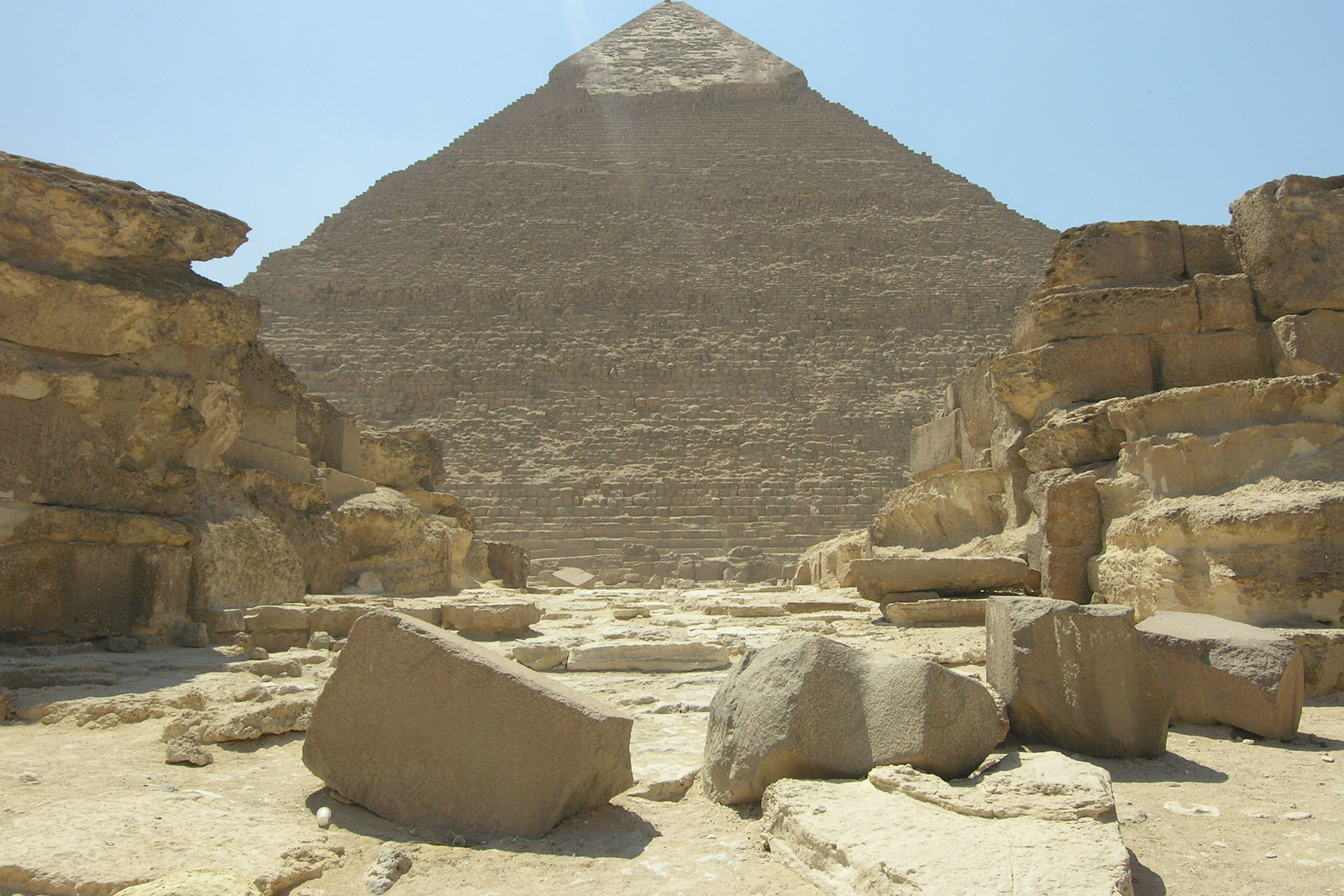
Pyramid of Khafre in Giza. Photography: Antonino Cardillo, 2005
Nevertheless, borrowing from Conrad’s Heart of Darkness about another river, “watching a coast as it slips by the ship is like thinking about an enigma”.[2] An enigma because ancient Egypt, despite being a long way from us time-wise, seems extremely close to our aesthetic sensibility. Like in a complex trick with mirrors, what we in the West call “modernity” is in part the result of the re-elaboration, in many cases unconscious, of this extraordinary reservoir of visions and contents, called the Orient.
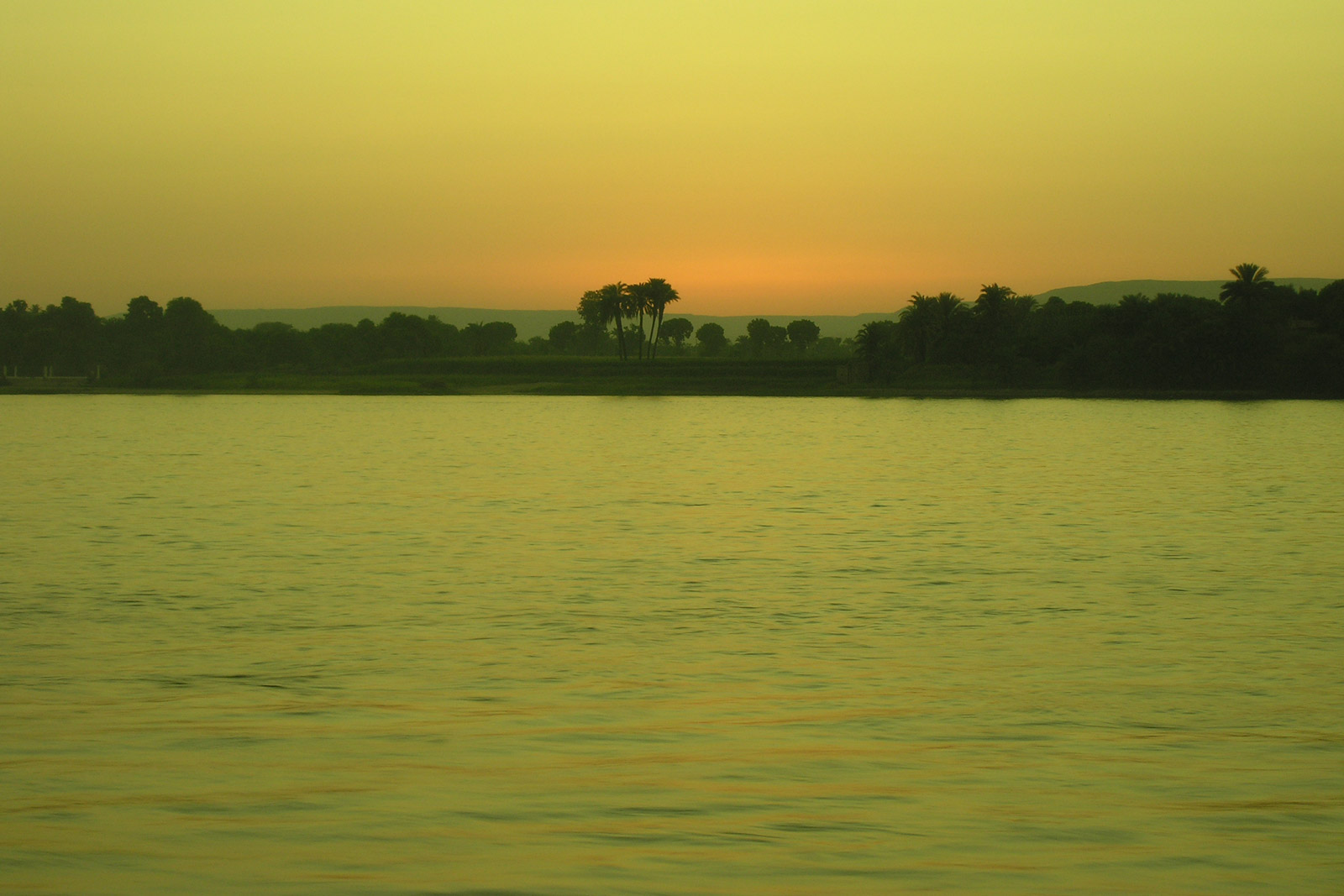
Bank of the Nile from the boat near to Luxor. Photography: Antonino Cardillo, 2005
The gradual rediscovery and assimilation of Eastern lands, from Maghreb to Persia, is a process that had already begun back in the 16th century. Pope Sixtus V for example had a fascination for Egyptian obelisks, and these became centre points for Rome’s new urban layout. But it was Napoleon’s military campaign that marked the watershed. In the late 19th and early 20th centuries luxury cruises organised by British travel agent Thomas Cook became a must for the European bourgeoisie. Agatha Christie’s Death on the Nile,[3] set in the 1930s, is an emblematic literary case. Anyone can arrive in Egypt with his own certainties: images, invented stories on the pyramids, temples and the Nile. It is possible to take refuge in the protected enclosures of the archaeological sites and ignore the life that comes near and assaults us, like the teeming mass of insistent sellers—“flies” as Agatha Christie called them—, the expanse of brick and concrete buildings, minarets lit up in fluorescent tubes, dilapidated houses.
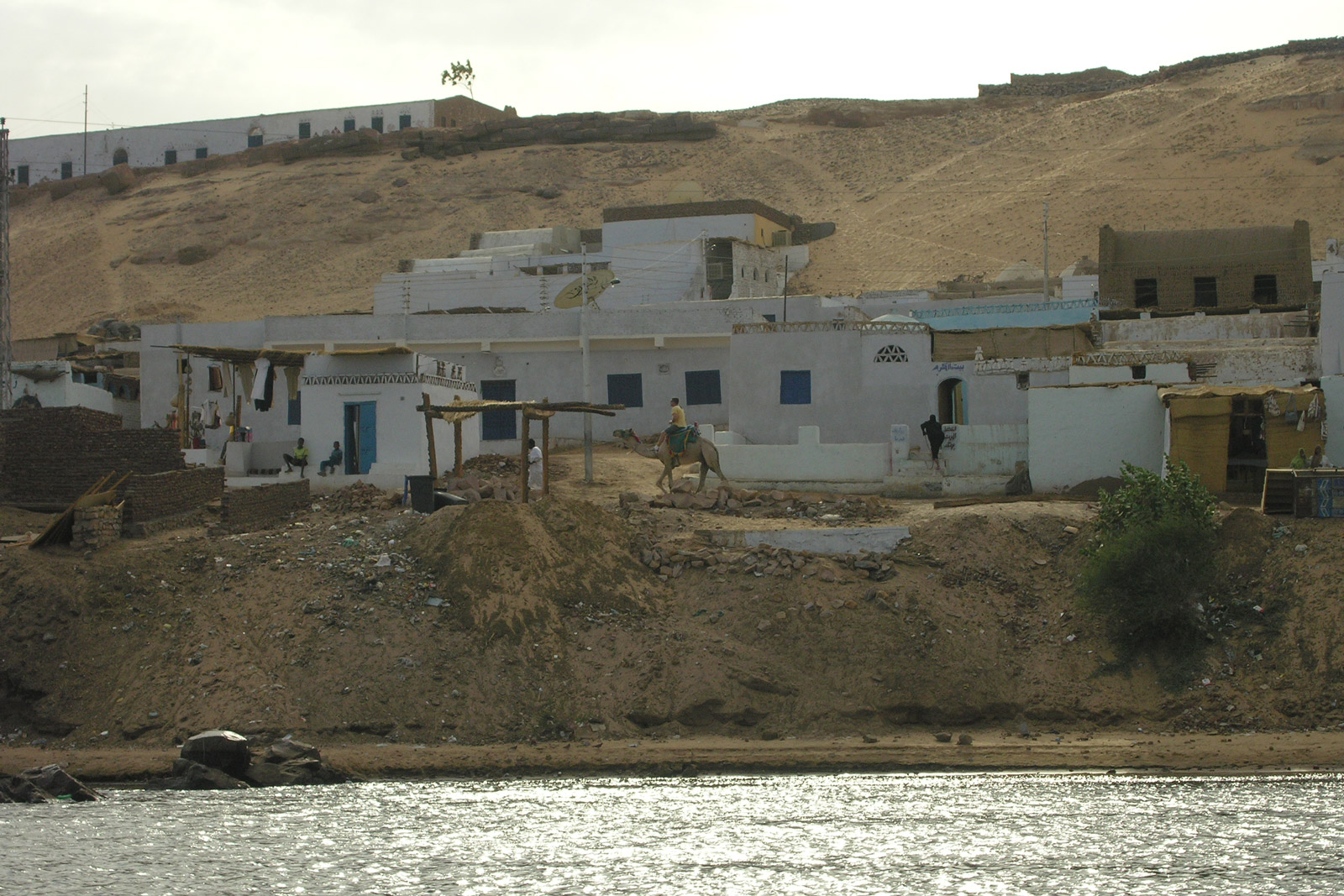
Houses of the Nile from the boat in Nubia. Photography: Antonino Cardillo, 2005
Still today on the banks of the river a rural community exists, almost forgotten by time. Paradoxically it is this poverty of means that offers an essential, enchanted and even pre-modern landscape. Reality shatters the certainties acquired from books read before the journey. The River becomes a metaphor for the time that passes, for everyone and for history. Daily life continues to deposit its sediments onto the banks of the river, dirtying palaces and temples, denying the certainty of a perpetual memory.
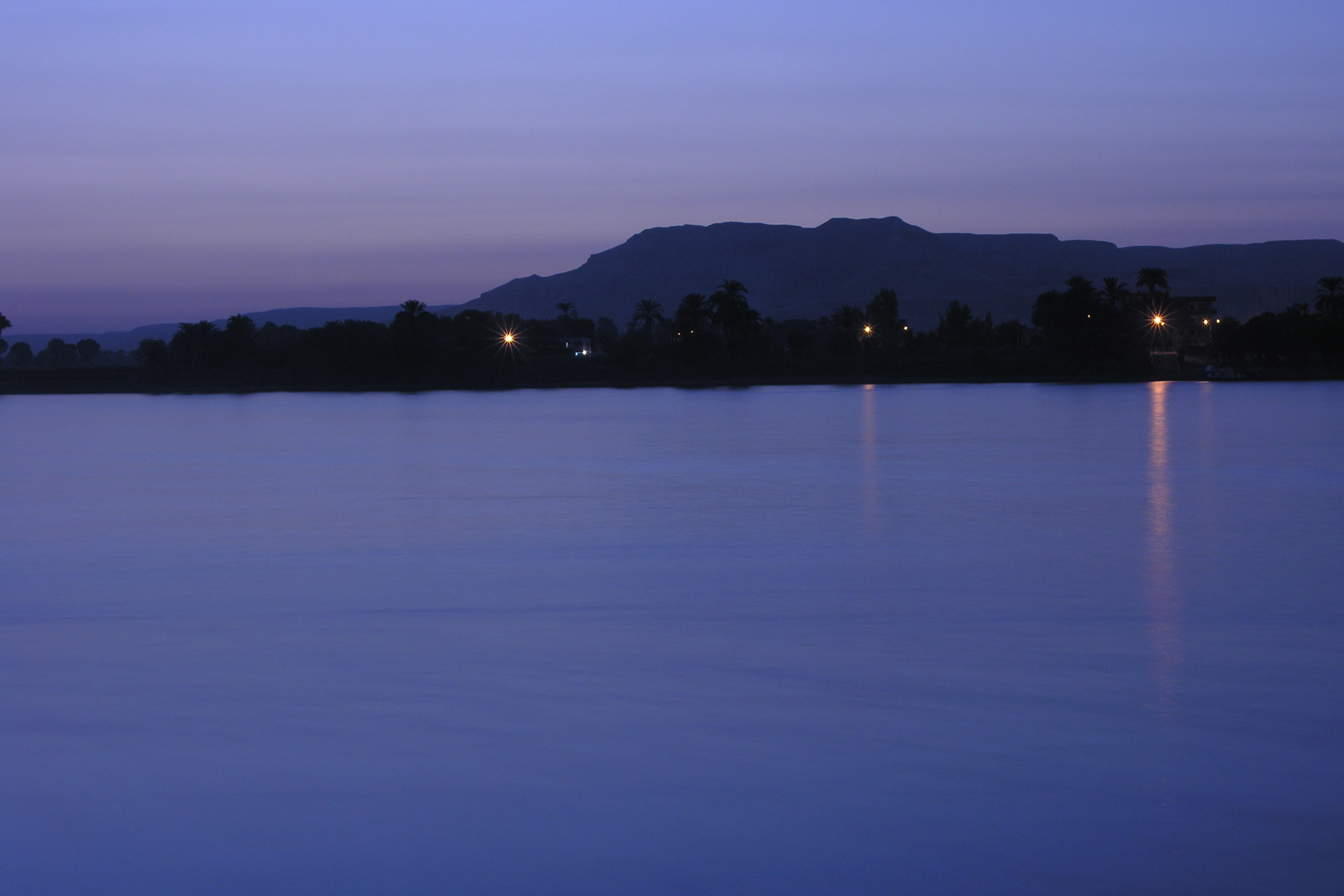
Bank of the Nile from the boat in Assuan. Photography: Antonino Cardillo, 2005
The Egyptian obsession with stopping time, recording in the memory, projecting onto stone the images of a reality actually experienced or desired—life beyond death—, is quite astonishing. Whether or not Egyptians were aware of it, here History was undoubtedly born. But its opposite was also born, namely the possibility of changing the truth by re-writing history.
In the supposed tomb of Moses, at Saqqara, an inscription refers to the 59th year of the kingdom of Haremhab. In reality, this pharaoh reigned from 1333 to 1306 BC, a total of twenty-six years: by extending backwards the duration of his kingdom, Haremhab removed from History four previous pharaohs—Akhenaton, Semenkhkara, Tutankhamon and Ai—, who were deemed heretical.
We are stirred by Egyptian tombs due to the infinite faith placed in writing and in imagery in perpetuating, via different means, the memory of the departed, from the most humble of men to pharaoh. The idea of preserving the deceased in a sophisticated setting, which we can see from the very first dynasties, was once the privilege of the pharaoh. An extraordinary example is the ancient step pyramid of Zoser (2668 – 49 BC), built by Imhotep, perhaps the first great architect to have his name written in history. But it was only towards the end of the Middle Kingdom that the democratisation process for the deceased commenced, with the introduction of the Osiris cult. Osiris was a good god, knowing on earth betrayal, death and poverty in a physical body. Rescued and brought back to life by the love of his wife and sister Isis, he gave men the hope of eternal life. He was a very human legend who offered the people the hope of life beyond death, a mirror image of the world of the living on earth.
At Thebes, in the Valley of Kings and Queens, the tombs tell of ancient lives. Like books hewn into the rocks, they are complex sequences of underground spaces whose walls are pages. Long and extraordinary layouts, where the writing blends with figures and every space is like the chapter of a book. The story and the space coincide, probably creating the oldest artistic synthesis of painting and architecture. Temples and tombs tell us about men’s love for divinities that are now forgotten, warn us that even religions are evolving phenomena, rising and falling, destined to wither and fade over time, like men’s lives.
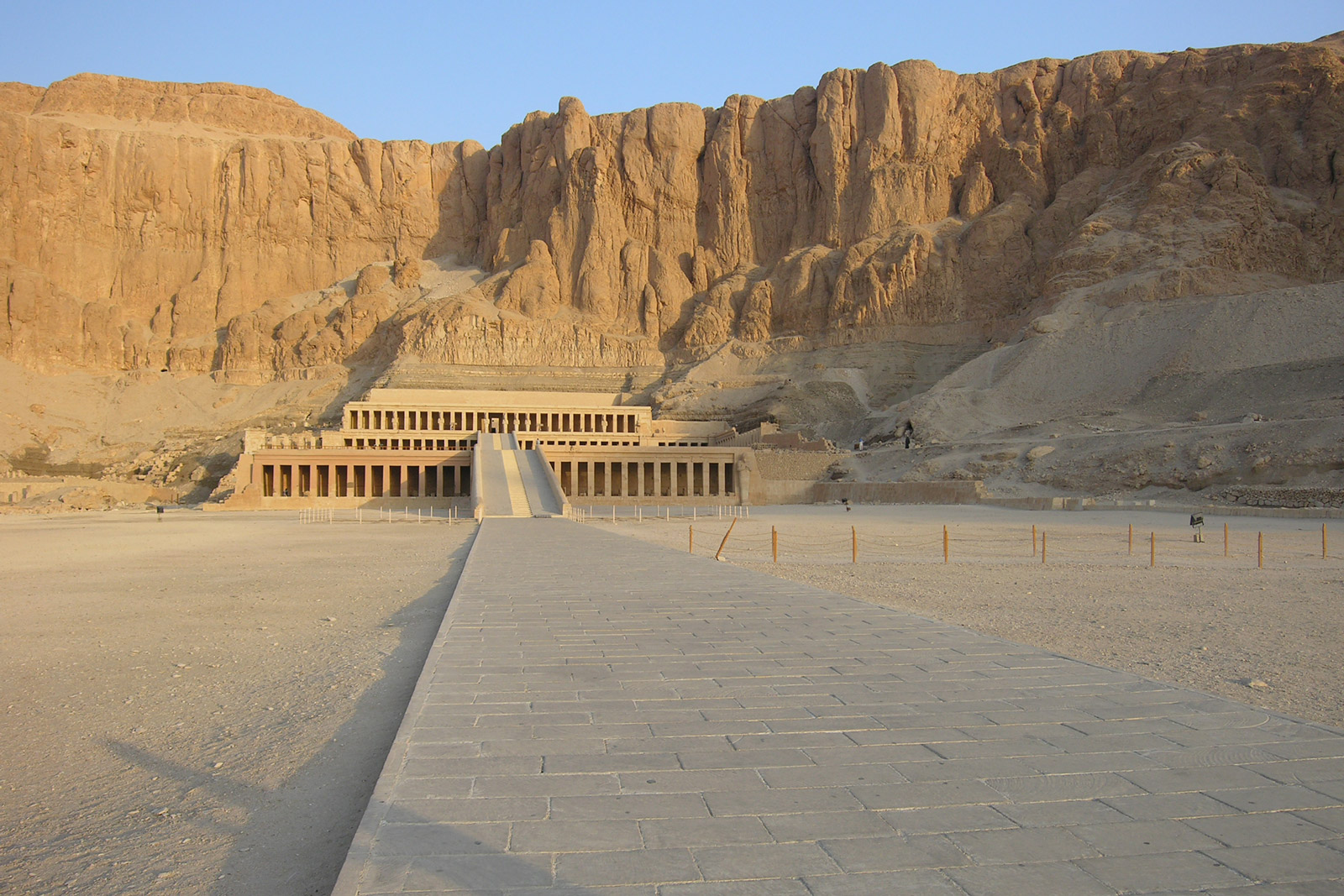
Mortuary Temple of Hatshepsut. Photography: Antonino Cardillo, 2005
